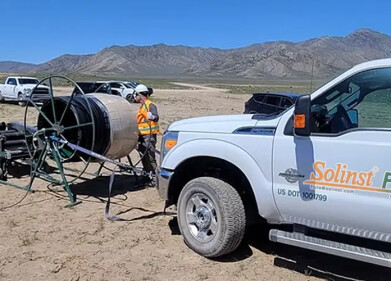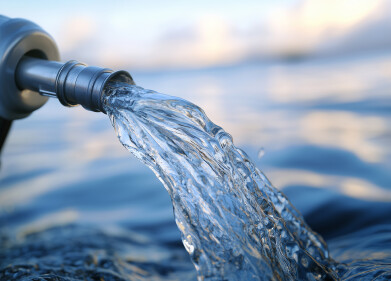Business News
Outpacing Regulation and Improving Standards: CEM2022 in Review
Mar 07 2022
So, another CEM has come to an end.
Despite being the 14th of its kind, this year’s Continuous Emissions Monitoring conference was special: it has been – and to some readers this may come as a shock – 25 years since ILM Exhibitions organised the first CEM all the way back in 1997.
Of course, what should have been an unequivocally happy occasion was marred by the horrific events in Ukraine. Never far from the minds of all speakers and attendees, it was a proximate reality for others – indeed, a speaker from the Kyiv-based spectrometry specialists Elvatech was unable to present. As such, many speakers across the three days, as well as the organisers themselves, were eager to express sentiments of solidarity with Ukraine. (Follow this link if you’d like to donate to the British Red Cross’ relief fund.)
In spite of this atmosphere, CEM2022 was able to provide yet another suite of masterclasses on continuous emissions monitoring, furnishing industry with the knowledge that’s improving air quality all around the world – this time, as a virtual event. As the conference progressed, with speakers from Spain, the Netherlands, Finland, North America, Poland, and Italy giving their insights, it was clear that what concerned the experts fell largely into two categories: the growing complexities of measuring ever-decreasing limit values and adapting to the unforeseen consequences of current standards.
There were various suggestions on how to stay ahead of the regulatory curve. For the VTT Technical Research Centre of Finland, Tuula Pellikka gave a convincing case for interlaboratory comparisons – a common practice in the Scandinavian country. Not only do these comparisons secure greater compliance, but the sharing of experience that naturally occurs within the process tends to lead to an improvement in the quality of measurements. For the National Physical Laboratory, Dr. Marc Coleman told a similar story, detailing the results of a blind comparison of sulphate measurements by accredited laboratories which, according to Dr. Coleman, this study can help analysts both meet and stay ahead of the Industrial Emissions Directive’s uncertainty limits for the monitoring of SO2 emissions.
One of the main concerns when it comes to regulation is the imminence of lower ELVs for mercury monitoring. From sorption traps in high-temperature flues to the calibration potentials of non-thermal plasma, a wide variety of innovative new methods and components were discussed, as various industries try to prepare for the future. For the most part, it’s the waste incineration industry that will be hardest hit – for instance, Dr. Paolo Lopinto detailed the best practices for complying with EN13211, an isokinetic sampling method for on-line mercury speciation in flue gas.
When it comes to DAHS, or data acquisition and handling systems, which were a central theme of CEM2022, the future will be decided by the differences between North American and European practices, according to Serge Bays, CEO of Limesoft. The two jurisdictions share many requirements, with both authorities requiring automatic substitution of unavailable values, biasing, calibration, and the production of environmental compliance reports – but there are extensive differences between the way that the Americans and the Brits deal with certification and calculation when it comes to data systems.
There was also a lot of discussion about the standards that urgently need updating. For Uniper, David Graham offered a fascinating reconsideration of EN15259, highlighting the problems with the standard surrogate gases and the unforeseen contributions of spatial uncertainties. Others raised concerns about the relative uncertainties that multiply as standards climb down the concentration scale, calling for further research and communication with industry about the rate of regulatory change.
Yet, a number of regulatory changes were generating more buzz than apprehension. Especially exciting, as Christoph Becker of ABB Automation discussed, is the world’s first comprehensive standard for data acquisition and handling systems, EN17255, which was released in 2019. It promises not only to enhance quality but to render readings uniform, ensuring that regulators can properly compare results from various different monitoring systems. Similarly, the latest update to the BREF documents for waste incinerators – which, among other revisions, augments procedures around mercury monitoring – was widely discussed, as industry gears up for its implementation in 2023.
Digital Edition
AET 28.4 Oct/Nov 2024
November 2024
Gas Detection - Go from lagging to leading: why investment in gas detection makes sense Air Monitoring - Swirl and vortex meters will aid green hydrogen production - Beyond the Stack: Emi...
View all digital editions
Events
Jan 12 2025 Abu Dhabi, UAE
Jan 14 2025 Abu Dhabi, UAE
Jan 20 2025 San Diego, CA, USA
Carrefour des Gestions Locales de L'eau
Jan 22 2025 Rennes, France
Safety, Health & Wellbeing LIVE
Jan 22 2025 Manchester, UK



















